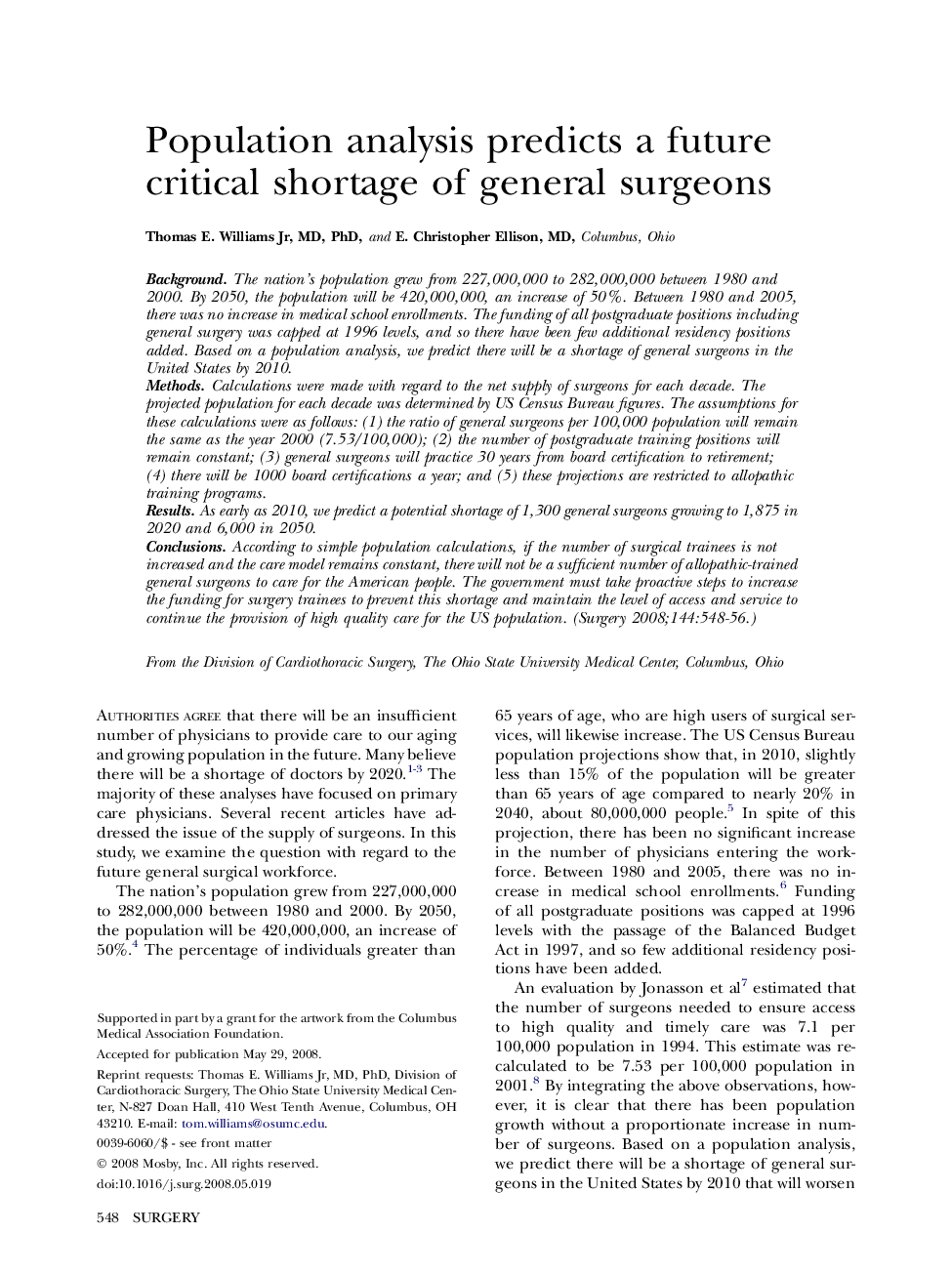| Article ID | Journal | Published Year | Pages | File Type |
|---|---|---|---|---|
| 4309786 | Surgery | 2008 | 9 Pages |
BackgroundThe nation's population grew from 227,000,000 to 282,000,000 between 1980 and 2000. By 2050, the population will be 420,000,000, an increase of 50%. Between 1980 and 2005, there was no increase in medical school enrollments. The funding of all postgraduate positions including general surgery was capped at 1996 levels, and so there have been few additional residency positions added. Based on a population analysis, we predict there will be a shortage of general surgeons in the United States by 2010.MethodsCalculations were made with regard to the net supply of surgeons for each decade. The projected population for each decade was determined by US Census Bureau figures. The assumptions for these calculations were as follows: (1) the ratio of general surgeons per 100,000 population will remain the same as the year 2000 (7.53/100,000); (2) the number of postgraduate training positions will remain constant; (3) general surgeons will practice 30 years from board certification to retirement; (4) there will be 1000 board certifications a year; and (5) these projections are restricted to allopathic training programs.ResultsAs early as 2010, we predict a potential shortage of 1,300 general surgeons growing to 1,875 in 2020 and 6,000 in 2050.ConclusionsAccording to simple population calculations, if the number of surgical trainees is not increased and the care model remains constant, there will not be a sufficient number of allopathic-trained general surgeons to care for the American people. The government must take proactive steps to increase the funding for surgery trainees to prevent this shortage and maintain the level of access and service to continue the provision of high quality care for the US population.
